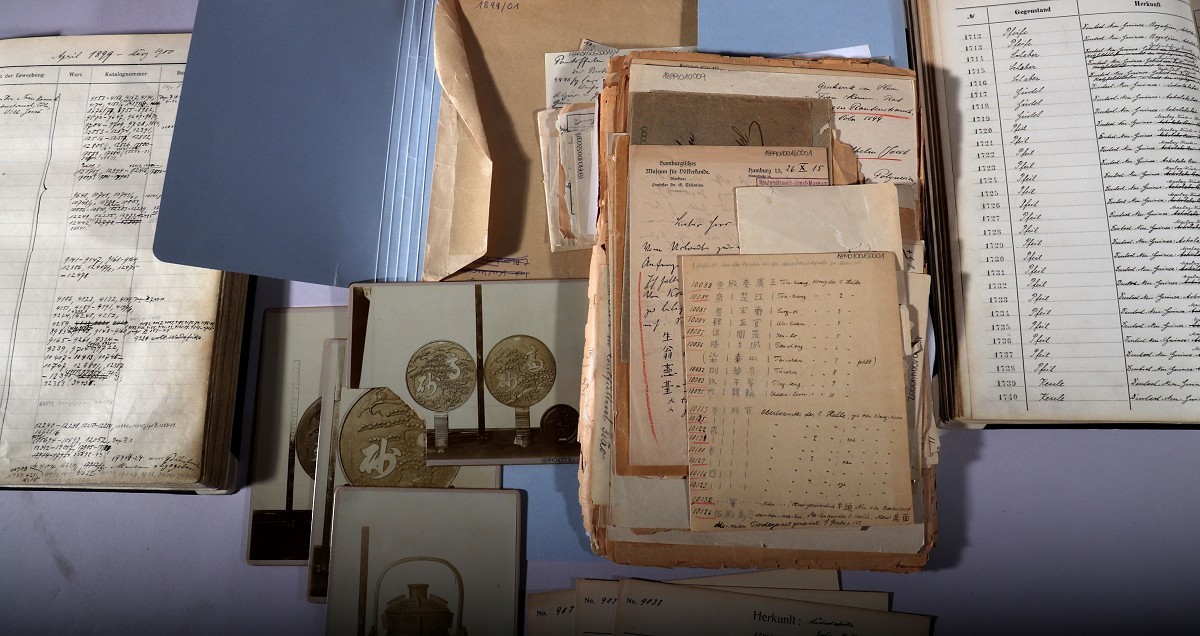Research
The RJM is committed to interdisciplinary postcolonial exploration of its collections. We support dialogue, knowledge exchange and cooperation with scholars, curators, activists, artists and actors of post-migrant society as well as with descendants of the societies from which the holdings originate. Polyphony and transparency are crucial elements of an ongoing decolonisation process: We are therefore currently working on a digitisation strategy while also seeking to discover and disclose the provenance of our collections. The aim of provenance research is to provide as complete as possible a picture of our collections’ history, from each object’s origin to its current place of storage – including the legal, political, cultural and scientific circumstances and perspectives under which it entered the museum. The topic is relevant enough for the city of Cologne to have established a Provenance Research Expert position at the Department of Art and Culture in 2007. So far, the focus has been on investigating the provenance of works of visual art confiscated as a result of Nazi persecution. Since 2017, the reappraisal of colonial contexts of injustice has also been discussed in a broader public context (“Provenance Research in Colonial Collections”). In this framework, we closely cooperate with the Colonial Provenances working group of the Provenance Research Committee, the German Lost Art Foundation, the Contact Point for Collections from Colonial Contexts in Germany and various international actors.
“TheMuseumsLab” cooperation
Wilhelm Joest
Max von Oppenheim
The Ludwig Collection and its protagonists
Restoration Project: Woven Stories
Systematic provenance research
The RJM is taking up the challenge of comprehensively disclosing its holdings. A first step in this direction is the systematic examination of the entire collection within the framework of a research traineeship. For this purpose, the currently available information on provenances is to be reviewed and expanded.
The results will form the basis for the next steps, such as prioritising the holdings for in-depth research, expanding cooperation with societies of origin, and exchange with other museums. The results will also contribute to the overarching research landscape, e.g., in the form of publications and within the in-house presentation and communication concept.
Duration: 2020-2022
Project funding: Ministry of Culture and Science of the State of North Rhine-Westphalia within the framework of the funding programme Forschungsvolontariat Kunstmuseen NRW (holder: Museumsgesellschaft RJM)
Project staff: Yagmur Karakis
